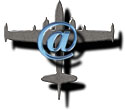|
|
|
||||||
|
By Satch Beasley
This narrative concerns the 1954 loss of an armed
Navy P2V-5 Neptune call sign 3 Cape Cod and piloted by Lt. Jesse Beasley.
The plane reportedly crashed and disappeared into the Yellow Sea while on
a training mission. The information in this account has been gathered from
various sources, but also includes theories postulated while trying to
locate the missing aircraft and what remains of its crew. Three Cape Cod departed Iwakuni Air Base in Japan at
2:26 on the afternoon of January 4, 1954. The crew consisted of ten; two
bachelors and eight married. The Flight was categorized as ‘COMBAT’
and its purpose was reconnaissance along the coastlines of North Korea and
China. Near the coast of China the plane encountered trouble
resulting in one engine being reported as disabled. Over the course of one
and a half hours the plane signaled a distress call "WE NEED
AID" to Iwakuni air base and requested co-ordinates for South
Korea’s air base at Kunsan. Initially the plane made a rapid decent and
then gradually returned to stable flight. Throughout the flight there was
interference with radio communications between the plane and its base.
Locations and conditions were not shared in a timely, nor accurate manner.
Three Cape Cod was tracked by radar at least part of the time during its
fateful flight and descent. The plane gradually lost altitude until
reporting 300 feet and it reported " PORT ENGINE ROUGH". The
last communication received from 3 Cape Cod were a series of V’s which
the base had requested and not, as the Navy has put forth, an indication
that the radio key had been tied down to signal an imminent ditching or
crash situation. While before the enemy all practical relief and
assistance may not have been afforded 3 Cape Cod. For some unexplained
reason search and rescue aircraft were not dispatched until after the
crash and then may have been diverted to the wrong co-ordinates, causing
some crew members, if any survived the crash, to lose their lives. Autopsy
reports on the two recovered crewmen give the date of death as two days
after the time of the crash. The official Navy report is filled with inaccuracies
and mistakes that have been proven wrong or logically impossible through
contemporary documents. It is therefore believed that the official report
was changed for some reason. One reason postulated for the change is that 3 Cape
Cod was on a secret ‘Ferret’ mission when it was subjected to a
hostile attack, causing the breakdown of the first engine and eventually
leading to the second engine becoming rough. The aircraft may have been
improperly suffered to be hazarded in the presence of the enemy by the
absence of essential onboard VHF radio equipment. Documents show that it
was directed in 1953 that all deploying patrol aircraft be equipped with
VHF as a dual installation with UHF because the majority of communications
with South Korea’s Search & Rescue as well as their Air Defense was
done using VHF. As the crippled plane crossed South Korean’s border it
may have been mistaken as a hostile intruder and a second aerial attack on
the plane may have occurred. Due to known tension in the area and earlier
incidences of attacks were being arbitrated at the time of the loss, it is
plausible to believe that the loss of a reconnaissance mission under such
circumstances would have been disavowed and records changed to cover real
activities. Our great nation should publicly acknowledge and honor
these men as courageous Cold War heroes.
|
 |
The Disappearance of 3 Cape Cod was excerpted from Satch Beasley's web site regarding the loss of his Father's aircraft. Please visit "A Cold War Cover Up" for more details. |
